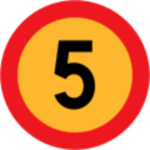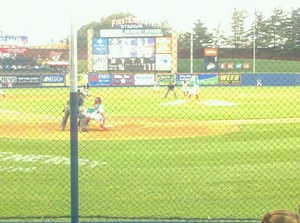The objective of this math lesson is to teach a group of young first grade students about the importance of fractions, decimals, and percentages. Students will demonstrate an ability to comprehend how fractions, decimals, and percentages are used in daily life studies.
The lesson should provide students with basic lesson and understanding of applying fractions, decimals, and percentages through hands on study, with money and food.
The students will be hooked in to the classroom with a new visual display that includes a variety of fractions displayed on the board. I picture four quarters on the board, and having addition symbols between them and having an equal sign with a dollar bill that follows. Underneath this visual will be 25%, ¼, and the value of the coin, .25 cents to give the students a great visual reference for decimals, percentages, and fractions.
I would open the lesson about fractions with manipulatives around the room. I would have circles whole, circles folded in half, and circles cut in half. I would do this for squares as well and talk to the students about how we can see shapes and equally separate them into parts. I would describe that this method of separation could be shown in many ways, and would draw a picture of circles, listing their fraction, as well as their percent, and what this meant as a decimal. I would describe that all of these units, when added together would equal one final product, and I would use a visual display with the circles and squares to show this.
I would then read two books, one called Apple Fractions, by Jerry Pallotta, and Rob Bolster, that shows how apples can be separated into small fractions. We would write the fractions on the board, and also list the percentage of the apple cut, as well as the decimal point that this percentage represented.
I would then read, Fraction Fun by David Adler, which has several fun stories for children about fractions and math application.
I would then take several minutes for the students to manipulate their circles, and have them all “show” with their pictures raised their whole circle, half circle, and other sized circles. On each piece would be the percentage of the circle that their pieces represented.
I would then have the class see how many pieces it took together to form circles, and then once one circle was complete, we would continue to see how many circles we could create as a class with the cut out circles we had.
This would give students a good idea of how much of the circle represented in fractions, decimals, and percentages. We could then write down all of the information to show that each piece added together would form 1.
I would follow this activity with another entitled Chocolate Fractions. I would take a Hershey’s bar and break it evenly on all of the lines. We could then discuss how all 12 pieces are equal parts of the original chocolate bar. We could discuss how each part is an equal piece of the Hershey’s bar, and we could reassemble the bar.
I would take another Hershey’s bar and show them that when the bar is broken in uneven pieces, that the bar isn’t split into equal parts, and that it is more challenging to see how much percent pieces would be if they weren’t equal.
I would then let students participate in the separating of other foods, like oranges, to determine how many segments an orange has, and we could draw a graph to show each segments percentage on a piece of paper, along with the decimal point, and percentage. The class could be separated into small groups for this activity, and work together.
I would then distribute some worksheets to discern if the objective of the lesson got across, to show fractions. I would have multiple choice options for each picture for students to allocate to the correct percentage for each of the drawings.
Worksheets:
http://www.edhelper.com/math/fractionsfg1501.htm
http://www.edhelper.com/math/fractionsfg1513.htm
To close the lesson, I would tell the class that they could eat pieces of the items in front of them, oranges and chocolate, if they could tell me their percentage of the whole, fraction, or decimal. This basic lesson should give students a foundation that they can expand upon when learning additional fraction material.
Resources
Model with Manipulatives. Scholastic. Acquired April 10, 2008.
http://www2.scholastic.com/browse/article.jsp?id=3752&FullBreadCrumb;=%3Ca+href%3D%22http%3A%2F%2Fwww2.scholastic.com%2Fbrowse%2Fsearch%2F%3Fquery%3Dmath%2Blessons%252C%2Bfractions%26Ntt%3Dmath%2Blessons%252c%2Bfractions%26Ntk%3DSCHL30_SI%26Ntx%3Dmode%2Bmatchallpartial%26y%3D0%26N%3D0%26Nty%3D1%26x%3D0%22+class%3D%22endecaAll%22%3EAll+Results%3C%2Fa%3E+%26gt%3B+Grade+1+-+2
Fraction Worksheets, ED Helper, Acquired April 10, 2008. www.edhelper.com/fractions





